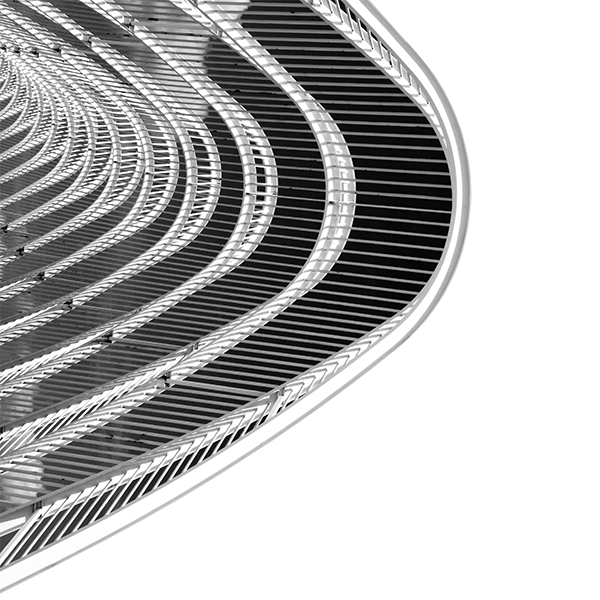Preventing Arcing
Designing Bond Requirements to Prevent Arcing on Aircraft Wing
EMA3D® simulation can be used to determine how much current will flow through a seam or joint in a bond. This metric can then be used to determine what impedance requirement should be placed upon a particular bond. This simple example shows how an aircraft designer can use simulation to specify fastener impedance and then mitigation techniques when the requirements are not feasible.
We will consider a section of an aircraft where metal is connected to carbon fiber composite. This section could be on a wing near a fuel tank so arcing is an important concern. The metal rib is connected to the composite skin via fasteners.
For this simple example we will assume that all the lightning detachment is on the composite, and there are no other current paths except through the fasteners at the composite-metal connection. Therefore we are concerned about arcing at those fasteners. We will use the standard value of 500 V for the threshold at which arcing occurs. Using Ohm’s law we can determine that the impedance of this entire composite-metal bond must be less than 2.5 milliohms or arcing will occur. However, let’s assume that this aircraft section is near a fuel tank so we would like to have a 20 dB margin on any requirement. Therefore the entire bond must be 0.25 milliohms.
Assume the area of the metal that is in contact with the composite is 6” wide and 2’ long. Here is a look at fastener spacing and fastener impedance requirements that would be necessary to meet the 0.25 milliohm requirement.
Let’s assume the technology at this aircraft manufacturer produces a fastener impedance of around 20 milliohms for metal and composite connections. This would require the aircraft engineer to have a fastener spacing of less than 1”, which is not mechanically feasible. Mechanically the closest the fasteners can be spaced are 1”
How does the aircraft designer meet this mechanical requirement and still prevent arcing?
The simple answer is to provide an alternative path for the lightning current. EMA® has designed lightning return networks (LRN) for numerous vehicles to mitigate this problem. In this simplified example – we assume that there is a large copper conductor (bond strap) running from the metal to another section of metal near the composite.
This sample bond strap takes approximately 130 kA of current and 70 kA of current continues to flow through the composite-metal bond. (This is a simplified example so we are ignoring late time current redistribution.)
The orange line on the plot below shows the fastener spacing vs. fastener impedance when the LRN (in this case a bond strap) is in place. Since less current is flowing through the bond, the overall bond the impedance requirement can be relaxed to 7.1 milliohms, or 0.71 milliohms with the 20 dB margin.
From this plot one can see that with a LRN in place the aircraft designer is able to have a 1″ fastener spacing which is mechanically feasible.
EMA3D® is able to predict the current and voltage which would occur at any seam or joint at a bond. EMA® is able to work with designer to help determine impedance requirements. In some cases the design of a specific lightning path (LRN) is necessary to meet design requirements and prevent vehicle damage. EMA® has extensive experience designing and simulating these type of systems. Trade studies of various bonding methods and lightning mitigation techniques can be rapidly preformed and are often useful for a customer to determine which type of mitigation is most effective for their program.






